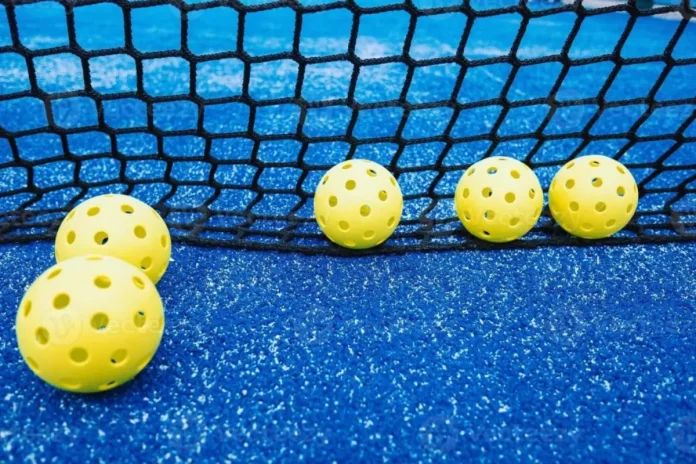Pickleball Ball Innovation and Design: Pickleball, one of the world’s fastest-growing sports, owes much of its appeal to its unique plastic ball and the distinctive sound it makes. Behind every ball is a mix of material science, precision manufacturing, and careful design aimed at improving performance for players of all levels.
From Plastic to Play
Most pickleballs are made from lightweight polymers such as polyethylene (PE) or polypropylene (PP). These materials are chosen for their durability and ability to deliver consistent play. The two main ways of making the balls are rotational moulding and injection moulding.
Rotational moulding shapes the ball in a way that produces faster speeds, making it the choice for advanced players. Injection moulding, however, is more common for mass production, creating durable balls that are better suited for beginners.
“Generally speaking, the rotational moulded ball produces a faster ball, which is preferred by more advanced players,”
said Riley Burgess, Vice President of Equipment Compliance at USA Pickleball.
“Injection moulded balls usually are more durable and slightly slower, which is better for beginner players.”
The Manufacturing Debate
Many manufacturers prefer injection moulding for its efficiency and lower cost. It produces more balls in less time and with fewer issues than rotational moulding.
“Injection moulding is a better option as you can control a lot of potential issues from arising. You can produce a considerably larger number of balls in the same amount of time it takes to make roto,”
said Angel Morales, Chief Development Officer of Professional Pickleball Partners, also known as Pro-Pickle.
“Rotomoulding is a lot more complex as you have a lot of things that will cause unwanted variance in hardness, wall thickness, bounce, durability, and other factors.
Cost is usually higher as well, but, up until more recently, this was the only way to make a truly high-performance pickleball.”
Design Details Matter
Each ball’s design includes exact hole patterns—about 26 larger holes for indoor play and 40 smaller holes for outdoor use. The holes are positioned to reduce air drag, limit wind interference, and keep the ball stable in flight. Precision drilling ensures consistent quality.
Pro-Pickle is working to combine advanced moulding with high-performance design so that faster, pro-level balls can also be used by everyday players.
Material Choice and Court Conditions
The type of resin used also impacts how the ball plays. PE resin is softer and better for indoor courts, giving a predictable bounce. PP resin is harder, ideal for outdoor courts, and performs well in sunlight, heat, and on rough surfaces.
Sustainability in Focus
With pickleball’s popularity rising, millions of plastic balls are sold each year, raising environmental concerns. Burgess said sustainability has “become more top of mind recently” for USA Pickleball, leading them to review the materials used in balls.
Pro-Pickle’s “Compost-a-Ball,” made from wheat straw and rice husk, is compostable and breaks down in about 100 days. According to Morales, these balls will debut at the World Pickleball Cup in October and could be a major step toward reducing plastic waste in the sport.
The Hidden Stars of the Game
While pickleball players often get the spotlight, the small plastic ball remains the sport’s quiet hero. From material selection to hole placement, each detail is part of an engineering process that has helped drive the sport’s explosive growth.
News in Brief: Pickleball Ball Innovation and Design
Pickleball balls are made from polymers like PE or PP, using rotational or injection moulding. Design, resin choice, and hole placement affect performance. With sustainability now a priority, Pro-Pickle’s compostable “Compost-a-Ball” may lead the way in eco-friendly production. These balls debut at the World Pickleball Cup in October.
ALSO READ: World Pickleball League Taps Famous Innovations to Spark Youth Craze Across India

